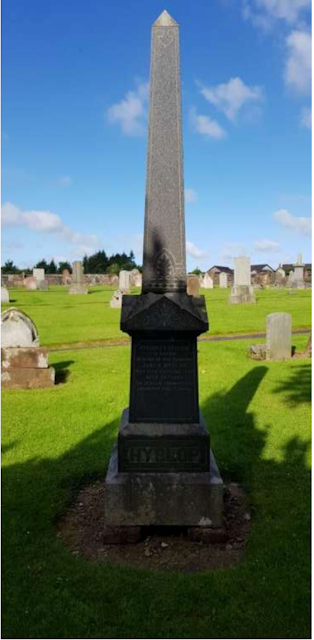It was not just the War which was taking its toll on the population in 1918.
Reported in the Cumnock Chronicle October 1918:
TWENTY-FIVE DEAD IN THE PARISH IN A FORTNIGHT
Not within the memory of the oldest inhabitant has such an epidemic been experienced in our parish as that through which we are passing at the present time. What makes it really serious is the number of death(sic) that have followed in its wake. During the past fortnight, no fewer than twenty-five deaths have been registered all traceable to influenza. The young, the middle-aged and the aged alike have been taken, and the whole community mourns with the bereaved ones in their time of trial. Our doctors have had a very hard time, but throughout it all they have been most attentive at all hours wherever their services were required. The influenza is of the most virulent type, and differs from the ordinary kind in that it attacks the respiratory organs. Practically all the males who have succumbed to it were miners, pneumonia, bronchitis, or other complications setting in in most cases. It was found advisable to close the schools until the first Monday in November, while the dancing classes, the Musical Association practices, and other meetings  have been put off on account of the epidemic. While it is hoped that we have seen the worst of the attack, there are still a number of serious cases under treatment.
Among the deaths are the following:
MR GEORGE RANKIN
A well know form has passed away on the person of Mr George Rankin, Glengyron, who fell victim to influenza on Thursday last after a short illness at the age of 70 years.
I looked up George Rankin's death certificate in the
Burns Centre. I also looked at the pages before and after. Almost all the deaths in October and November were attributed to influenza. As the report suggests, miners seemed to be particularly susceptible. Also there were some children and elderly people and one young woman who had just given birth. The illness was short. The longest period of illness I saw was 8 days, most recorded 6 or 7 days influenza and 3-4 days pneumonia. There were 5 deaths from influenza on 17 October alone plus one from bronchopneumonia.
Here are the names I noted between 9 - 23 October 1918
Robert Reid Harvey 27 coal miner
William Hutchison 57 coal miner
Margaret Brown 10 (father Thomas in the ASC)
George Manson Finlay 26 colliery blacksmith
Janet Kay 23 influenza 5 days, confinement 3 days
James Kelly 32 coal miner ( and William Kelly 28 yrs his brother died in November)
Agnes Reid McCartney 34 * photo below
Charles Hastings 10
the aforementioned George Rankin 70 coal miner (it didn't say he was retired)
Jane Rankin 29
Cunningham Richmond 14
Samuel Hyslop Coltart 4 (bronchopneumonia)
John Johnston McCall 52 coal miner
Elizabeth Walker 16
Annie Carr 61
Frederick Goodyear coal miner
Cornelius Kerr 42 coal miner
Robert Murdoch 2 ( his father Robert serving in the RSF)
John Penrose 43 coal miner
Archibald Hodge 43 coal miner
added 2022: all on same death certificate
William Mackie age 26 coal miner died of influenza 11 days and pneumonia 2 days on 23 October
James Gibson age 51 pit boiler fireman 22 October influenza 4 days and next entry his daughter
Margaret Gibson age 26 influenza 8 days pneumonia 4 days on 25th October. She left an 8 year old daughter Elizabeth.
also all on the same Death Certificate
Frank McCarthy 29 pithead worker on 29th October of diabetes, influenza and pneumonia
Joseph Riley 35 woodcarter 30 Oct of influenza pleuron pneumonia
William Corbett 34 pit engine keeper influenza and pneumonia
 |
| Agnes Reid McCartney ms Harvey and 2 of her 6 children. Photo from Rhonda |
The first name above,Robert Reid Harvey, is her younger brother, son of burgh officer Andrew Harvey and Janet Reid




































